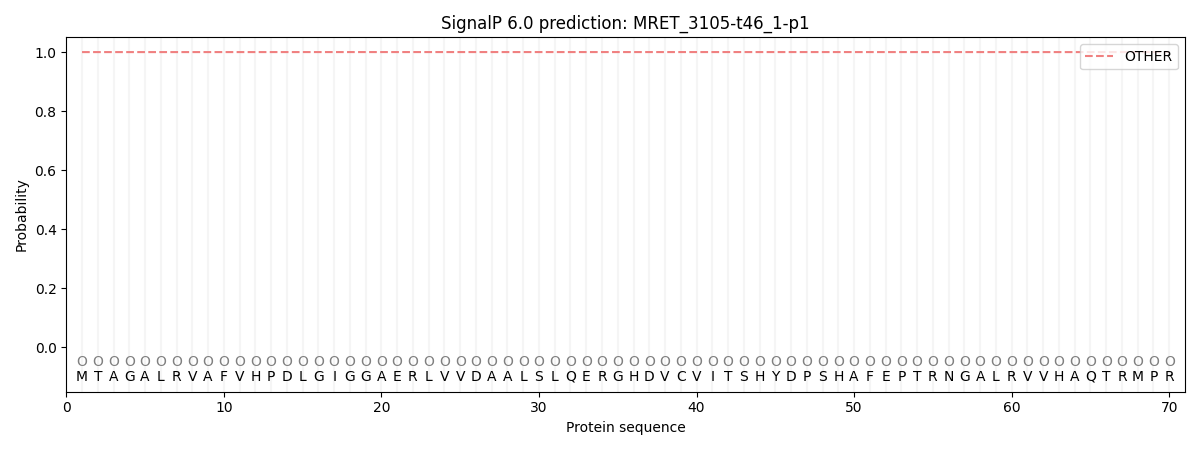You are browsing environment: FUNGIDB
CAZyme Information: MRET_3105-t46_1-p1
You are here: Home > Sequence: MRET_3105-t46_1-p1
Basic Information |
Genomic context |
Full Sequence |
Enzyme annotations |
CAZy signature domains |
CDD domains |
CAZyme hits |
PDB hits |
Swiss-Prot hits |
SignalP and Lipop annotations |
TMHMM annotations
Basic Information help
| Species | Malassezia restricta | |||||||||||
|---|---|---|---|---|---|---|---|---|---|---|---|---|
| Lineage | Basidiomycota; Malasseziomycetes; ; Malasseziaceae; Malassezia; Malassezia restricta | |||||||||||
| CAZyme ID | MRET_3105-t46_1-p1 | |||||||||||
| CAZy Family | GT24 | |||||||||||
| CAZyme Description | alpha-1,3/alpha-1,6-mannosyltransferase | |||||||||||
| CAZyme Property |
|
|||||||||||
| Genome Property |
|
|||||||||||
| Gene Location | ||||||||||||
Enzyme Prediction help
| EC | 2.4.1.257:6 | 2.4.1.132:6 |
|---|
CDD Domains download full data without filtering help
| Cdd ID | Domain | E-Value | qStart | qEnd | sStart | sEnd | Domain Description |
|---|---|---|---|---|---|---|---|
| 340834 | GT4_ALG2-like | 4.98e-144 | 6 | 484 | 1 | 392 | alpha-1,3/1,6-mannosyltransferase ALG2 and similar proteins. This family is most closely related to the GT4 family of glycosyltransferases. ALG2, a 1,3-mannosyltransferase, in yeast catalyzes the mannosylation of Man(2)GlcNAc(2)-dolichol diphosphate and Man(1)GlcNAc(2)-dolichol diphosphate to form Man(3)GlcNAc(2)-dolichol diphosphate. A deficiency of this enzyme causes an abnormal accumulation of Man1GlcNAc2-PP-dolichol and Man2GlcNAc2-PP-dolichol, which is associated with a type of congenital disorders of glycosylation (CDG), designated CDG-Ii, in humans. |
| 340831 | GT4_PimA-like | 1.46e-32 | 7 | 489 | 1 | 366 | phosphatidyl-myo-inositol mannosyltransferase. This family is most closely related to the GT4 family of glycosyltransferases and named after PimA in Propionibacterium freudenreichii, which is involved in the biosynthesis of phosphatidyl-myo-inositol mannosides (PIM) which are early precursors in the biosynthesis of lipomannans (LM) and lipoarabinomannans (LAM), and catalyzes the addition of a mannosyl residue from GDP-D-mannose (GDP-Man) to the position 2 of the carrier lipid phosphatidyl-myo-inositol (PI) to generate a phosphatidyl-myo-inositol bearing an alpha-1,2-linked mannose residue (PIM1). Glycosyltransferases catalyze the transfer of sugar moieties from activated donor molecules to specific acceptor molecules, forming glycosidic bonds. The acceptor molecule can be a lipid, a protein, a heterocyclic compound, or another carbohydrate residue. This group of glycosyltransferases is most closely related to the previously defined glycosyltransferase family 1 (GT1). The members of this family may transfer UDP, ADP, GDP, or CMP linked sugars. The diverse enzymatic activities among members of this family reflect a wide range of biological functions. The protein structure available for this family has the GTB topology, one of the two protein topologies observed for nucleotide-sugar-dependent glycosyltransferases. GTB proteins have distinct N- and C- terminal domains each containing a typical Rossmann fold. The two domains have high structural homology despite minimal sequence homology. The large cleft that separates the two domains includes the catalytic center and permits a high degree of flexibility. The members of this family are found mainly in certain bacteria and archaea. |
| 340830 | GT4_sucrose_synthase | 1.11e-22 | 184 | 476 | 157 | 388 | sucrose-phosphate synthase and similar proteins. This family is most closely related to the GT4 family of glycosyltransferases. The sucrose-phosphate synthases in this family may be unique to plants and photosynthetic bacteria. This enzyme catalyzes the synthesis of sucrose 6-phosphate from fructose 6-phosphate and uridine 5'-diphosphate-glucose, a key regulatory step of sucrose metabolism. The activity of this enzyme is regulated by phosphorylation and moderated by the concentration of various metabolites and light. |
| 223515 | RfaB | 3.26e-22 | 6 | 491 | 3 | 377 | Glycosyltransferase involved in cell wall bisynthesis [Cell wall/membrane/envelope biogenesis]. |
| 395425 | Glycos_transf_1 | 3.91e-22 | 264 | 470 | 1 | 158 | Glycosyl transferases group 1. Mutations in this domain of PIGA lead to disease (Paroxysmal Nocturnal haemoglobinuria). Members of this family transfer activated sugars to a variety of substrates, including glycogen, Fructose-6-phosphate and lipopolysaccharides. Members of this family transfer UDP, ADP, GDP or CMP linked sugars. The eukaryotic glycogen synthases may be distant members of this family. |
CAZyme Hits help
| Hit ID | E-Value | Query Start | Query End | Hit Start | Hit End |
|---|---|---|---|---|---|
| 0.0 | 1 | 524 | 1 | 524 | |
| 0.0 | 1 | 524 | 1 | 524 | |
| 2.71e-213 | 1 | 519 | 1 | 518 | |
| 2.44e-144 | 6 | 486 | 21 | 513 | |
| 3.45e-144 | 6 | 486 | 21 | 513 |
Swiss-Prot Hits download full data without filtering help
| Hit ID | E-Value | Query Start | Query End | Hit Start | Hit End | Description |
|---|---|---|---|---|---|---|
| 1.38e-80 | 7 | 488 | 10 | 432 | Alpha-1,3/1,6-mannosyltransferase ALG2 OS=Kluyveromyces lactis (strain ATCC 8585 / CBS 2359 / DSM 70799 / NBRC 1267 / NRRL Y-1140 / WM37) OX=284590 GN=ALG2 PE=3 SV=1 |
|
| 6.22e-78 | 8 | 515 | 9 | 456 | Alpha-1,3/1,6-mannosyltransferase ALG2 OS=Saccharomyces cerevisiae (strain ATCC 204508 / S288c) OX=559292 GN=ALG2 PE=1 SV=2 |
|
| 4.48e-77 | 6 | 446 | 5 | 388 | Alpha-1,3/1,6-mannosyltransferase ALG2 OS=Ashbya gossypii (strain ATCC 10895 / CBS 109.51 / FGSC 9923 / NRRL Y-1056) OX=284811 GN=ALG2 PE=3 SV=1 |
|
| 7.33e-77 | 1 | 477 | 1 | 409 | Alpha-1,3/1,6-mannosyltransferase ALG2 OS=Rhizomucor pusillus OX=4840 GN=ALG2 PE=1 SV=1 |
|
| 5.71e-76 | 7 | 485 | 9 | 439 | Alpha-1,3/1,6-mannosyltransferase ALG2 OS=Candida albicans (strain SC5314 / ATCC MYA-2876) OX=237561 GN=ALG2 PE=3 SV=2 |
SignalP and Lipop Annotations help
This protein is predicted as OTHER

| Other | SP_Sec_SPI | CS Position |
|---|---|---|
| 1.000086 | 0.000001 |

